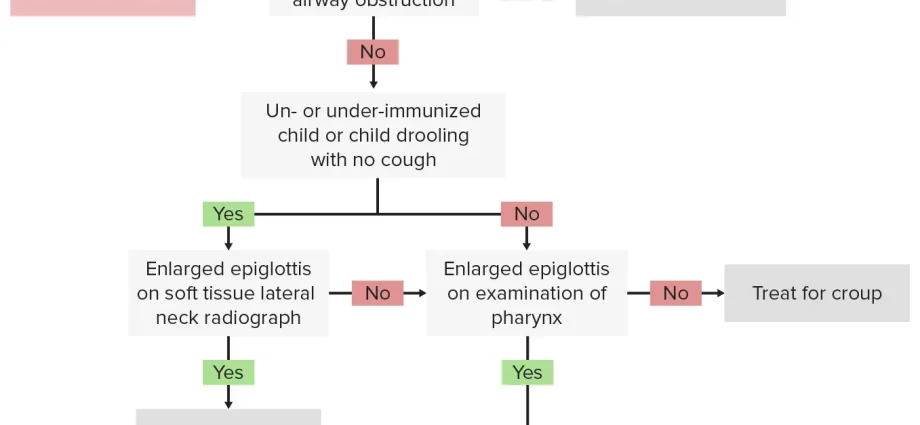Contents
Epiglottitis is a much more common disease in children than in adults. It is a rare type of acute laryngitis characterized by airway obstruction and respiratory failure. The ailment begins with pain in the upper part of the larynx, which causes such pain when swallowing that the patient quits eating and drinking altogether.
What is epiglottitis?
Epiglottitis is a rare type of laryngitis that affects children more than adults (usually between 2 and 6 years of age). If it occurs in adults – it has a much milder course. Supraglottic laryngitis is characterized by airway obstruction and respiratory failure. The disease is mainly caused by Haemophilus influenzae type B bacteria). The disease suddenly begins with pain in the upper part of the larynx, which becomes so severe when swallowing that the patient avoids swallowing. This results in profuse drooling. From the beginning of the disease, there is a high temperature and a rapidly increasing shortness of breath. At the first symptoms, the patient should be transported immediately to the laryngological emergency unit.
The incidence of epiglottitis
In the years 1989-1992 the p / Hib vaccine was introduced, which significantly reduced the number of cases. Currently, the ailment occurs very rarely and usually affects people who are unvaccinated and adults. Child mortality fell similarly. Inflammation of the epiglottis may occur rarely in vaccinated children. In any case of rapidly increasing dyspnea, an ambulance should be called.
The course of epiglottitis
After the appearance of fever within 6-12 hours and symptoms suggesting inflammation of the upper respiratory tract, laryngeal dyspnea appears, accompanied by a significant deterioration of the patient’s condition. The intensity of symptoms is caused by increasing inflammatory edema within the soft tissue of the epiglottis area and epiglottic epiglottis folds. This results in the swollen epiglottis moving posteriorly inferior to it, which in turn leads to a reduction in airflow. The child’s breathing begins to be shallow and accelerated, so it should be placed in a position that facilitates breathing, i.e. leaning forward with the head tilted back.
In addition, acute supraglottic laryngitis has an unbearable sore throat that becomes worse when swallowing food or fluids. In this type of laryngitis, cough and hoarseness do not occur (unlike subglottic laryngitis). Nevertheless, the child’s voice may be slightly altered and indistinct. The disease in children up to the age of 1 can manifest itself only with high temperature and developing respiratory failure. However, in older children and adults there is only a severe sore throat (despite swollen glottis)
Diagnosis and treatment of epiglottitis
During a standard oral examination, the doctor is able to see the epiglottis of the child and can therefore directly assess the severity of the swelling.
In children with suspected epiglottitis, consultation with an ENT specialist and an anesthesiologist is necessary. In life-threatening conditions, intubation is performed to clear the airway, and because the soft tissues of the throat are swollen, it is difficult. Therefore, in any case, doctors must be prepared that a tracheotomy may be necessary.
Then, specialists perform an intravenous puncture and take a blood sample and a bacterial swab for examination. If the airway has been well opened, direct laryngoscopy is performed together with the determination of the nature and extent of the laryngeal infiltration. In addition, a throat swab is taken.
Another study is directoscopic examination of the larynx, which highlights the redness and swelling of the epiglottis and epiglottic tinctures. Further therapy should take place in a hospital under the supervision of a pediatrician. Before the doctor removes the tube, he should reassess the patient’s inflammation – if the swelling has been reduced, the child can be easily extubated.
Antibiotic treatment and restoration of airway patency usually resolves inflammation completely and heals the patient.










